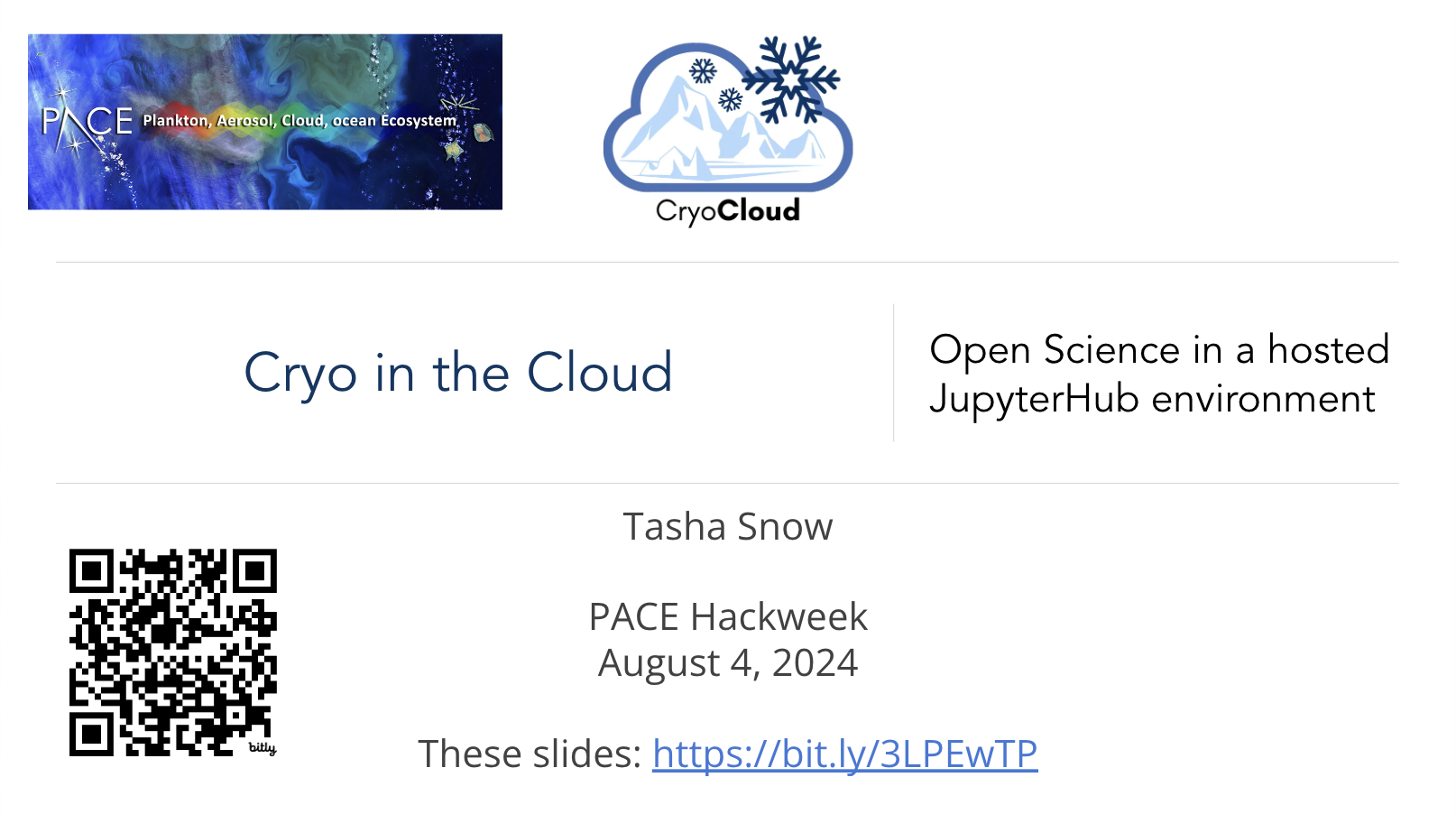Demo CryoCloud#
Tutorial Lead: Tasha Snow (ESSIC, NASA GSFC)
Summary#
CryoCloud (soon to be StratusGeo) is a cloud-computing community and JupyterHub meant to help streamline and accelerate your geoscience workflows as data volumes are ever expanding. This tutorial will show you how to use CryoCloud for the hackweek and your research afterwards.
Learning Objectives#
In this notebok you will learn:
The advantages of open science and cloud-computing
How to open CryoCloud and get familiar with the tools
Contents#
Access the CryoCloud powerpoint whenever you need to reference it#
Open the powerpoint by directly clicking on the hyperlink above or to open it in the CryoCloud Linux Desktop web browser as follows:
Copy this hyperlink:
https://bit.ly/3LPEwTPClick on the plus (
+) sign in theFile Browserto the left to open aLauncherwindowUnder Notebooks, click on
Desktopto access the Linux Desktop. This will open a new tab.Click on the
Web Browsertool (globe) at the bottom of the screenPaste the url into the search bar

Open CryoCloud#
Scroll through the server sizes. Stick with the 2 Gb server (the default).
Tip
The amount of memory (RAM) you select, you are guaranteed, but if you use more you risk crashing your server. If you crash the server, it just requires re-running your code from the start (or perhaps restarting your kernel).
Most users require only 2 Gb of memory, like while we develop code, so consider using 2 Gb for most of your work and then switching over to a larger computer when you want to start running things.
Check your memory usage at the bottom in the middle of the screen.
Scroll through the languages. Choose the Python programming language.
Sit back and learn about each of the tools!
JupyterHub options and viewing setup
Github
Virtual Linux desktop
SyncThing
Viewing and editing of different files
Now after the demo…
Shutting down your JupyterHub#
TIP
Best Practice: Shut down the CryoCloud server when you are done to save us money.
If you only close your tab or click log out, your server will continue running for 90 minutes.
Whenever you are done, it is best to shut down your server when you sign out to save on money for CryoCloud. Time on the JupyterHub costs money and there are systems in place to make sure your server doesn’t run indefinitely if you forget about it. After 90 minutes of no use, it will shut down. We prefer you shut down the server when so we save that 90 minutes of computing cost. To do so:
In upper left, click on
File>Hub Control Panel, which will open another tabClick the
Stop Serverbutton. Once this button disappears after you clicked it, your server is off.Click
Log Outin the top right of your screen and you will be logged out, or you can start a new serverYou can now close this tab and the other tab where you were just working

Finishing up#
🎉 Congratulations! You’ve completed this tutorial and have seen how we can access and use CryoCloud.
References#
To learn more about CryoCloud, find code for NASA data access, and find other research tutorials check out this other documentation:
